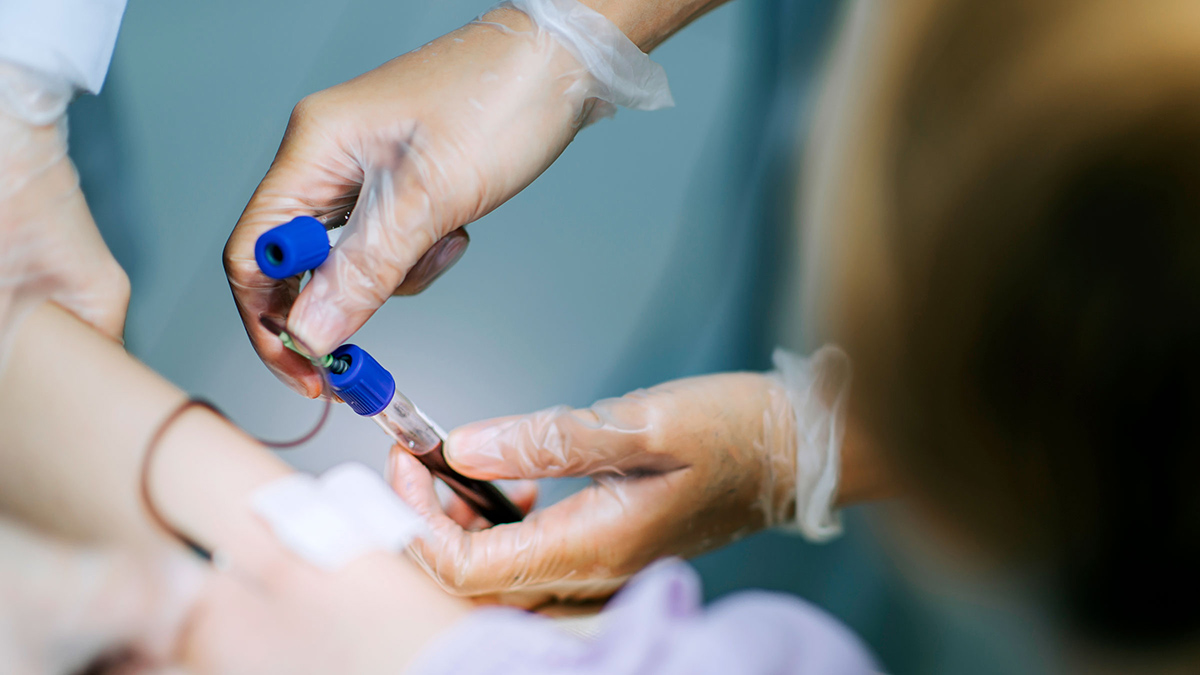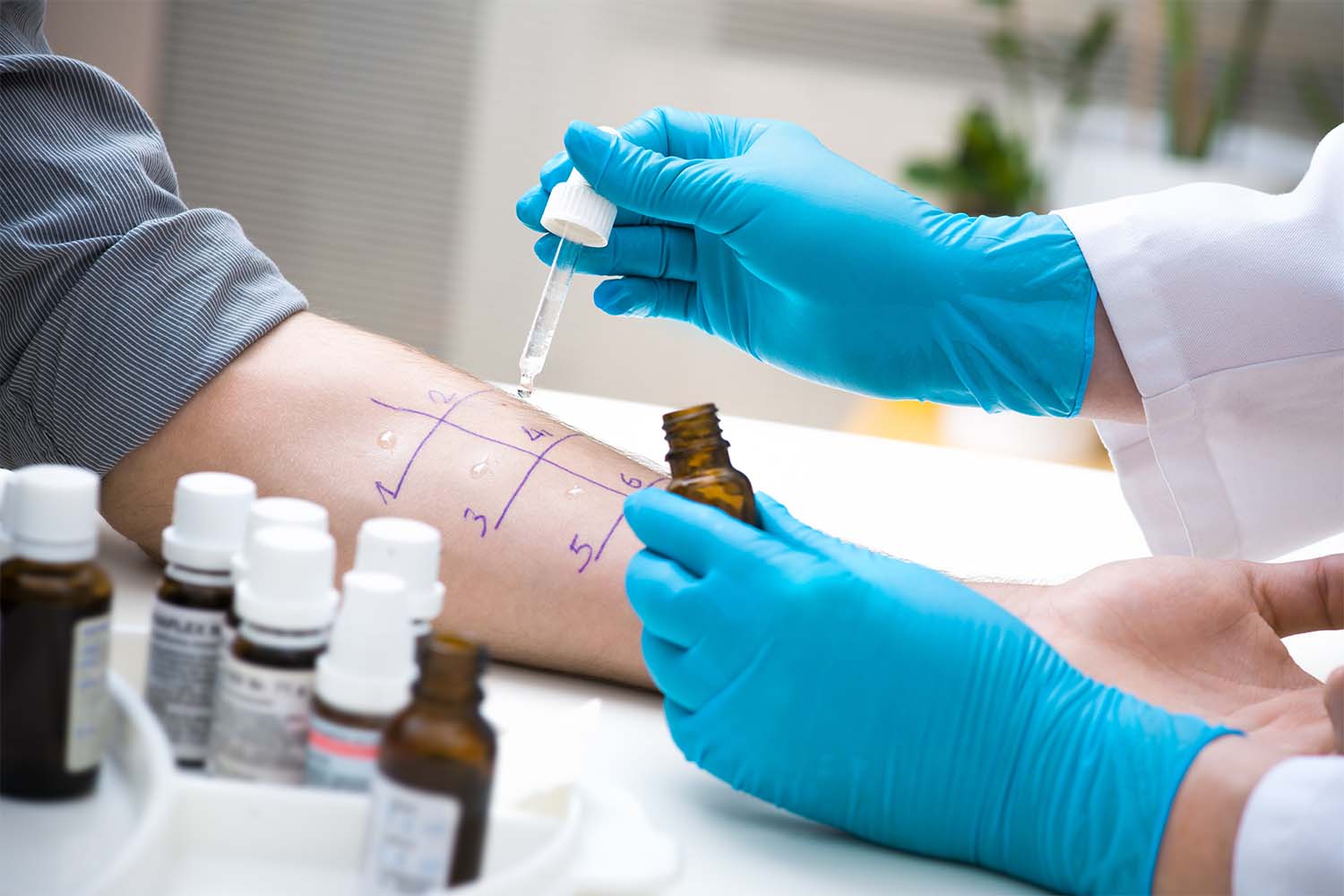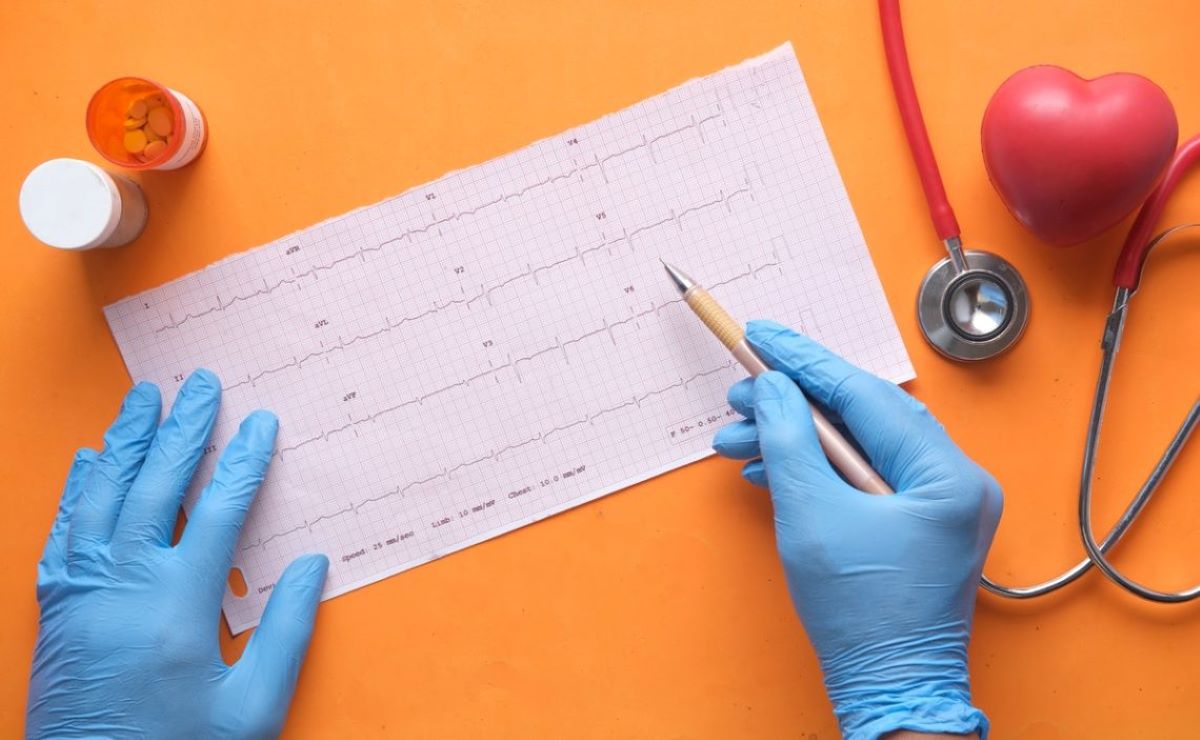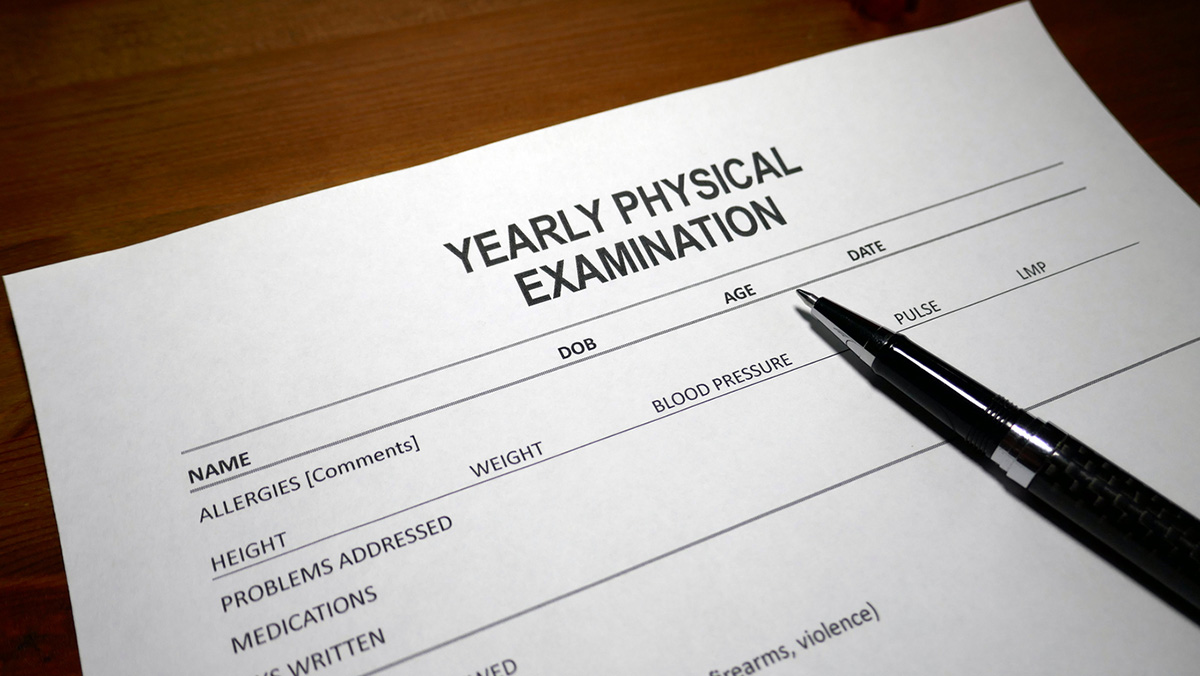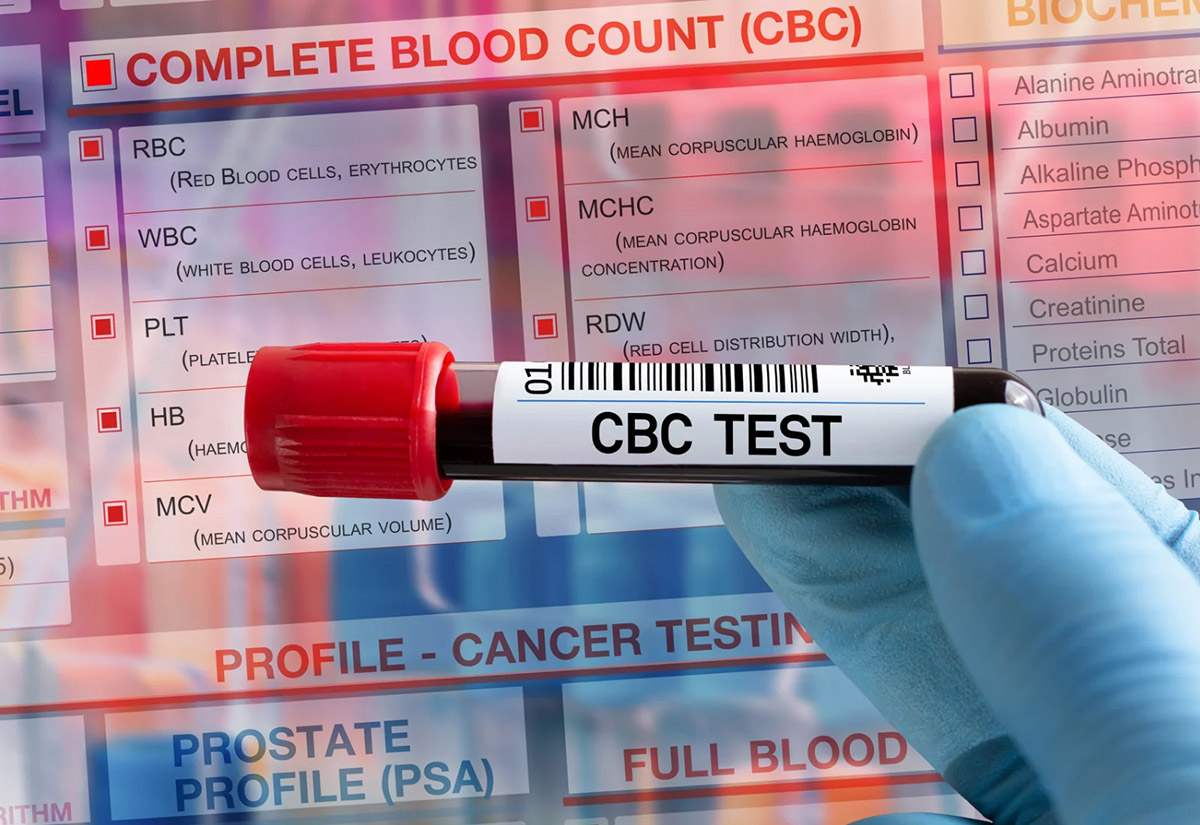

Finance
How Much Do Blood Tests Cost Without Insurance
Published: November 21, 2023
Discover the cost of blood tests without insurance and how it can impact your finance. Find affordable options to manage your healthcare expenses
(Many of the links in this article redirect to a specific reviewed product. Your purchase of these products through affiliate links helps to generate commission for LiveWell, at no extra cost. Learn more)
Table of Contents
- Introduction
- Understanding the Cost of Blood Tests
- Factors Affecting the Price of Blood Tests
- Average Prices of Common Blood Tests
- Affordable Options for Blood Tests Without Insurance
- Free or Low-Cost Blood Test Clinics
- Utilizing Health Savings Accounts (HSAs) or Flexible Spending Accounts (FSAs)
- Negotiating Prices with Healthcare Providers
- Seeking Financial Assistance Programs
- Conclusion
Introduction
Welcome to our comprehensive guide on the cost of blood tests without insurance. Blood tests are a common medical procedure used to diagnose and monitor various health conditions. However, without insurance coverage, the cost of these tests can be a significant financial burden. Understanding the factors that influence the price of blood tests and exploring affordable options can help individuals make informed decisions about their healthcare.
Whether you’re uninsured or your insurance doesn’t cover the full cost of blood tests, this article will provide valuable insights to help you navigate the complex world of healthcare pricing. We’ll explore the average prices of common blood tests, discuss affordable options, and provide practical tips on how to minimize expenses.
While it’s essential to prioritize your health and get the necessary tests done, it’s equally important to be aware of the financial implications. By having a clear understanding of the cost of blood tests, you can plan your budget accordingly and explore cost-saving strategies to mitigate the financial impact.
Blood tests are an integral part of healthcare, enabling doctors to assess your overall health, screen for underlying conditions, monitor medication efficacy, and make informed medical decisions. They provide valuable insights into various aspects of your health, such as blood cell counts, cholesterol levels, liver function, kidney function, and more.
However, the cost of blood tests can vary significantly. It depends on several factors, including the type of test, the complexity of the analysis, the location where the test is conducted, and the healthcare provider’s pricing policies. Understanding these factors is crucial to ensure you’re not overpaying for your blood tests.
Understanding the Cost of Blood Tests
When it comes to blood tests, it’s essential to understand how the cost is determined. The price of blood tests can be influenced by various factors that contribute to the overall expenses. By understanding these factors, individuals can gain insights into potential cost-saving strategies.
One significant factor that affects the cost is the type of blood test being performed. There are several types of blood tests, each with its own purpose and complexity. Common blood tests include complete blood count (CBC), cholesterol panel, glucose test, liver function test, kidney function test, and thyroid panel, among others. The complexity and the number of tests conducted can impact the overall cost.
Another determining factor is the healthcare provider or laboratory conducting the blood test. Different providers have varying pricing structures and fee schedules. It’s worth considering cost comparisons among different providers in your area to identify more affordable options without compromising on quality.
The geographical location where the blood test is performed can also influence the cost. Healthcare costs can vary significantly from one region to another, and urban areas generally have higher prices compared to rural areas. Researching and comparing prices among different facilities within your vicinity can help in finding the most cost-effective option.
Furthermore, it’s important to consider any additional fees. Some providers may charge separate fees for collecting the blood sample, processing the sample, or interpreting the results. Understanding these additional costs upfront can prevent any surprises when it comes time to pay.
It’s worth noting that the cost of blood tests can also be influenced by negotiation between the patient and the healthcare provider. In some cases, providers may be willing to lower the price or offer discounts, especially if the patient is uninsured and paying out-of-pocket. It’s worth exploring these possibilities and having open conversations about pricing options with your healthcare provider.
While understanding the cost of blood tests is important, it’s equally important to prioritize your health. Regular blood testing can be crucial for early detection and prevention of various health conditions. Therefore, it’s advisable to consult with your healthcare provider and discuss the recommended frequency of blood tests based on your specific health needs.
In the next section, we will delve deeper into the average prices of common blood tests to provide you with a clearer picture of what to expect in terms of costs.
Factors Affecting the Price of Blood Tests
The cost of blood tests can vary significantly depending on various factors. Understanding these factors can help individuals make informed decisions and explore cost-saving options. Here are some key factors that influence the price of blood tests:
- Type and complexity of the test: Different blood tests have varying levels of complexity and require different resources and equipment. More complex tests that involve specialized techniques or rare analyses are generally more expensive.
- Number of tests conducted: The more blood tests you get, the higher the overall cost. Each test requires resources, materials, and time to conduct, so the total price will increase accordingly.
- Healthcare provider and location: Different healthcare providers and laboratories have their own pricing structures. In addition, the geographic location can also impact costs, with urban areas often having higher prices compared to rural areas.
- Additional fees: Apart from the base cost of the blood tests, there may be additional fees associated with the process. These can include fees for sample collection, processing, or interpretation of the results. It’s important to inquire about these additional costs upfront.
- Insurance coverage: If you have insurance, the cost of blood tests may be partially or fully covered. The amount you pay out-of-pocket will depend on your specific insurance plan, including deductible, copay, and coinsurance amounts. It’s important to check with your insurance provider to understand your coverage and any associated costs.
- Uninsured or self-pay discounts: Some healthcare providers may offer discounts to patients who are uninsured or paying out-of-pocket. It’s worth inquiring about any self-pay discounts or payment plans that may be available.
By considering these factors, individuals can better understand the cost structure associated with blood tests and make informed decisions about their healthcare. In the next section, we will explore the average prices of common blood tests to provide a general idea of what you can expect to pay.
Average Prices of Common Blood Tests
The cost of common blood tests can vary depending on several factors, including the type of test, the healthcare provider, and the geographic location. While it’s important to note that these figures are approximate and can vary widely, here are the average prices for some commonly performed blood tests without insurance:
- Complete Blood Count (CBC): This test measures the various components of your blood, such as red blood cells, white blood cells, and platelets. The average cost ranges from $20 to $50.
- Basic Metabolic Panel (BMP): This test measures electrolytes, glucose, kidney function markers, and liver function markers. The average cost ranges from $50 to $100.
- Lipid Panel: This test measures cholesterol levels and triglycerides. The average cost ranges from $50 to $100.
- Glucose Test: This test measures blood sugar levels. The average cost ranges from $10 to $30 for a basic glucose test and can increase for more specialized glucose tolerance tests.
- Liver Function Test (LFT): This test assesses liver health by measuring certain enzymes and proteins. The average cost ranges from $25 to $50.
- Thyroid Panel: This test evaluates thyroid function by measuring hormone levels. The average cost ranges from $50 to $150.
It’s important to keep in mind that these are average prices and can vary significantly depending on the factors mentioned earlier. Prices may also differ based on the healthcare provider or laboratory you choose to visit.
Before undergoing any blood tests, it is recommended to contact the healthcare provider directly to obtain accurate pricing information. This will help you plan for the associated costs and potentially explore more affordable options if necessary.
While these prices may seem daunting, there are several ways to reduce the financial burden. In the following sections, we will explore affordable options for blood tests without insurance and provide tips on how to lower the cost.
Affordable Options for Blood Tests Without Insurance
For individuals without insurance or those with insurance that doesn’t fully cover the cost of blood tests, there are several affordable options to consider. These options can help reduce the financial burden while ensuring you still receive the necessary medical care. Here are some affordable solutions to explore:
- Community health clinics: Many community health clinics offer low-cost or sliding-scale fee services for individuals without insurance. These clinics may provide essential medical services, including blood tests, at a reduced cost based on your income level.
- Direct-to-consumer lab testing: There are online platforms and direct-to-consumer lab testing companies that offer blood tests at discounted rates. These companies often partner with established laboratories, allowing individuals to order specific tests directly and receive the results electronically.
- Health screenings and events: Keep an eye out for health screenings and events in your community, as these often provide free or discounted blood tests. These events are typically organized by local healthcare providers, nonprofits, or government agencies to promote public health and raise awareness.
- Public health departments: Public health departments may offer low-cost or free blood tests for certain conditions, such as sexually transmitted infections or infectious diseases. Contact your local health department to inquire about available services.
- Medical research studies: Universities and research institutions often conduct medical research studies that require participants to undergo specific blood tests. In some cases, these studies may offer free or heavily discounted blood tests as part of their research protocols.
- Negotiating prices: It’s worth discussing the cost of blood tests directly with your healthcare provider or laboratory. They may be willing to negotiate the prices, offer payment plans, or provide discounts for self-pay patients.
Exploring these options can help you find more affordable avenues for getting the blood tests you need. It’s important to research and compare prices, inquire about any available discounts or payment plans, and consider the overall quality and reliability of the testing services.
Another potential strategy is to take advantage of healthcare savings accounts, such as Health Savings Accounts (HSAs) or Flexible Spending Accounts (FSAs). These accounts allow you to set aside pre-tax money to cover eligible medical expenses, including blood tests. Consulting with a financial advisor or your employer’s benefits representative can provide more information on how to utilize these accounts effectively.
By exploring these affordable options and utilizing cost-saving strategies, individuals without insurance can still access necessary blood tests without breaking the bank. However, it’s important to balance affordability with the quality and accuracy of the tests, ensuring that you receive reliable results for proper medical care.
In the next section, we will dive deeper into the topic of free or low-cost blood test clinics, providing additional avenues for accessing affordable blood tests.
Free or Low-Cost Blood Test Clinics
For individuals who are unable to afford traditional healthcare services or blood tests, there are free or low-cost clinics available that provide essential medical care at reduced or no cost. These clinics strive to ensure that everyone has access to necessary healthcare, including blood tests. Here are some options to consider:
- Community health clinics: Community health clinics are often funded by government grants or nonprofits and provide comprehensive medical services to those in need. These clinics may offer blood tests at little to no cost based on income level or on a sliding fee scale.
- Free health clinics: Some organizations and charities operate free health clinics that cater specifically to individuals without insurance. These clinics provide a range of medical services, including blood tests, at no cost. They generally rely on volunteer healthcare professionals and donations to operate.
- Public assistance programs: Government-funded programs like Medicaid or state-funded healthcare programs may cover blood tests for eligible individuals with low incomes. These programs provide comprehensive healthcare services, including diagnostic tests, to qualifying individuals and families.
- Nonprofit organizations: Certain nonprofit organizations offer medical assistance programs that provide free or low-cost blood tests to individuals in need. These organizations may have specific eligibility criteria, so it’s important to check their requirements and apply accordingly.
- Free health screenings: Health fairs, community events, and health screenings organized by local healthcare providers or nonprofits often include free blood tests as part of their services. These events are aimed at promoting public health and early detection of various medical conditions.
- Lab testing vouchers: Some hospitals, clinics, or healthcare organizations provide lab testing vouchers to individuals who cannot afford the full cost of blood tests. These vouchers can significantly reduce the out-of-pocket expenses or cover the entire cost of the tests.
It’s important to research and reach out to local resources, such as government agencies, community organizations, and healthcare providers, to identify nearby free or low-cost clinics that offer blood tests. These clinics often operate on a first-come, first-served basis, so it’s advisable to contact them in advance for information on services and availability.
While free or low-cost clinics can help individuals access blood tests without the burden of high costs, it’s essential to keep in mind that availability may vary depending on location and resources. Additionally, it’s important to inquire about any associated fees or additional costs, such as processing or interpretation fees.
In the next section, we will discuss strategies for utilizing Health Savings Accounts (HSAs) or Flexible Spending Accounts (FSAs) to help manage the cost of blood tests, particularly for individuals who have access to these healthcare savings accounts.
Utilizing Health Savings Accounts (HSAs) or Flexible Spending Accounts (FSAs)
Health Savings Accounts (HSAs) and Flexible Spending Accounts (FSAs) are healthcare savings accounts that can be utilized to manage the cost of blood tests and other medical expenses. These accounts allow individuals to set aside pre-tax money to pay for eligible healthcare expenses, including blood tests. Here’s how you can leverage these accounts:
Health Savings Accounts (HSAs):
HSAs are available to individuals who are enrolled in a High Deductible Health Plan (HDHP). Here’s how you can use your HSA for blood tests:
- Contribute to your HSA: Contribute funds to your HSA through pre-tax payroll deductions or direct contributions. The maximum amount you can contribute is determined each year by the IRS.
- Pay for blood tests: Use the funds in your HSA to pay for eligible medical expenses, including blood tests. Keep track of your expenses and save your receipts for documentation purposes.
- Take advantage of tax benefits: Contributions to your HSA are tax-deductible, and any interest or earnings on the account are tax-free. Additionally, withdrawals made for qualified medical expenses, such as blood tests, are also tax-free.
- Save for future expenses: If you don’t use all the funds in your HSA during the year, the balance rolls over to the next year, allowing you to save for future healthcare expenses, including future blood tests.
Flexible Spending Accounts (FSAs):
FSAs are offered by employers as part of a benefits package and allow employees to contribute pre-tax dollars to cover eligible medical expenses. Here’s how you can use your FSA for blood tests:
- Estimate and allocate funds: At the beginning of the plan year, estimate your anticipated medical expenses, including the cost of blood tests. Allocate an appropriate amount of funds to your FSA.
- Submit reimbursement claims: Pay for your blood tests out-of-pocket and then submit reimbursement claims to your FSA provider. Keep all receipts and documentation as proof of expenses.
- Take advantage of tax savings: Contributions to an FSA are pre-tax, meaning you won’t pay income tax on the funds used for eligible medical expenses, such as blood tests. This can result in significant tax savings.
- Use funds before the deadline: Unlike HSAs, FSAs have a “use it or lose it” policy, meaning you need to spend the funds within the plan year or any grace period provided by your employer. Ensure you use the allocated funds for blood tests or other eligible medical expenses before the deadline to avoid losing the money.
Both HSAs and FSAs can be valuable tools for managing the cost of blood tests and other healthcare expenses. It’s recommended to consult with a financial advisor or your employer’s benefits representative to understand the specific guidelines, contribution limits, and eligibility requirements associated with these accounts.
By utilizing HSAs or FSAs, individuals can allocate pre-tax funds to cover blood test expenses, reducing the financial burden and maximizing tax savings. In the next section, we will discuss strategies for negotiating prices with healthcare providers to further minimize the cost of blood tests.
Negotiating Prices with Healthcare Providers
When it comes to managing the cost of blood tests, one strategy to consider is negotiating prices directly with healthcare providers. While negotiating medical costs may feel intimidating, it’s worth exploring as it can lead to significant savings. Here are some tips for negotiating prices with healthcare providers:
- Research and compare prices: Before discussing prices with a healthcare provider, research and compare the cost of blood tests at different facilities in your area. Having this information will allow you to negotiate from an informed standpoint.
- Communicate openly with the provider: Contact the healthcare provider or the billing department directly to discuss your situation. Explain that you are uninsured or have limitations on your insurance coverage and that you are seeking affordable options for blood tests.
- Ask about self-pay discounts: Inquire if the provider offers any discounts or reduced rates for self-pay patients. Many providers are willing to negotiate lower prices or provide discounts to individuals who are paying out-of-pocket.
- Discuss payment plans: If paying the full amount upfront is a financial burden, ask if the provider offers payment plans. This allows you to spread the cost of the blood tests over a set period, making it more manageable.
- Explain your financial situation: Be transparent about your financial circumstances and the challenges you face in affording the blood tests. Providers may be more willing to work with you if they understand your situation.
- Consider bundled or package pricing: Inquire if the provider offers bundled or package pricing for multiple tests. Sometimes, combining several blood tests into a single package can lead to overall cost savings.
- Discuss payment options: If the provider is not flexible with the test prices, see if they have other payment options, such as a sliding fee scale based on income. This can help reduce the cost according to your financial circumstances.
- Request a detailed cost breakdown: Ask for a detailed breakdown of the charges associated with the blood tests. This will help you identify any unnecessary or inflated charges that you can negotiate or seek clarification on.
- Consider seeking a second opinion: If you receive high price quotes from one provider, consider seeking a second opinion from another provider. The cost can vary significantly between different healthcare facilities, and you may find more affordable options elsewhere.
Remember, the key to successful negotiation is open communication and being assertive about your needs. Providers understand that medical costs can be a burden for patients, and they may be willing to work with you to find a mutually acceptable arrangement.
However, it’s important to note that not all providers may be open to negotiation, especially if they have fixed pricing policies or contractual obligations with insurance companies. It’s always advisable to be prepared for different outcomes and explore other cost-saving options if negotiation is not fruitful.
In the next section, we will discuss financial assistance programs that can provide additional support for individuals seeking affordable blood tests without insurance coverage.
Seeking Financial Assistance Programs
If you’re struggling to afford the cost of blood tests without insurance coverage, there are financial assistance programs available that can help alleviate the financial burden. These programs are designed to assist individuals who are unable to pay for medical services. Here are some options to consider:
- Charitable organizations and foundations: Many charitable organizations and foundations provide financial assistance to individuals in need of medical services. These organizations may offer grants or financial aid specifically for blood tests or other diagnostic procedures.
- Hospital financial assistance programs: Hospitals often have financial assistance programs for uninsured or underinsured patients. These programs may offer discounts, sliding fee scales, or even full coverage of medical expenses, including blood tests, based on income level and financial need.
- Government assistance programs: Depending on your eligibility and income level, you may qualify for government assistance programs that provide financial aid for healthcare services. Programs such as Medicaid, state-funded healthcare programs, or local assistance programs can be valuable resources in accessing affordable blood tests.
- Patient advocacy organizations: Patient advocacy organizations in various medical fields may provide resources and assistance for individuals seeking affordable healthcare services, including blood tests. These organizations can guide you to financial assistance programs or provide support in navigating the healthcare system.
- Prescription assistance programs: Some pharmaceutical companies offer patient assistance programs that provide financial aid specifically for laboratory tests. These programs are aimed at individuals who require regular monitoring through blood tests for medication efficacy or managing chronic conditions.
- Nonprofit clinics and community centers: Nonprofit clinics and community centers may offer free or low-cost medical services, including blood tests. These organizations rely on grants, donations, and partnerships to provide healthcare services to individuals without insurance.
When seeking financial assistance programs, it’s important to research and understand the specific eligibility criteria, application processes, and any documentation required. Start by contacting local hospitals, community health clinics, or nonprofit organizations to inquire about available programs and resources.
It’s worth noting that while these programs can provide significant financial relief, they may have limited funding or specific eligibility requirements. Therefore, it’s advisable to explore multiple options and apply early to increase your chances of receiving assistance for blood tests.
Remember to be proactive in seeking out these resources and advocating for yourself. Don’t be afraid to reach out for help and ask questions regarding financial assistance programs. These programs are there to support individuals in need and ensure access to essential medical services.
In the final section, we will conclude our guide on the cost of blood tests without insurance and summarize the key points discussed.
Conclusion
Managing the cost of blood tests without insurance coverage can be challenging, but there are several strategies and resources available to help make them more affordable. By understanding the factors that influence the price of blood tests and exploring alternative options, individuals can navigate the healthcare system with greater ease.
We discussed the factors affecting the cost of blood tests, including the type of test, healthcare provider, and location. Being aware of these factors allows individuals to better understand pricing structures and make informed decisions.
Furthermore, we explored affordable options for blood tests without insurance, such as community health clinics, direct-to-consumer lab testing, and free or low-cost health screenings. These options can provide access to necessary medical care at reduced or no cost.
We also discussed the benefits of utilizing healthcare savings accounts, such as Health Savings Accounts (HSAs) and Flexible Spending Accounts (FSAs). These accounts allow individuals to set aside pre-tax funds to cover medical expenses, including blood tests, providing significant tax savings.
Negotiating prices with healthcare providers is another effective strategy to lower the cost of blood tests. By researching prices, communicating openly with providers, and discussing payment options, individuals can often negotiate discounts or payment plans to better manage their expenses.
For individuals with limited financial resources, seeking financial assistance programs is a viable option. Charitable organizations, hospital assistance programs, government programs, and nonprofit clinics can provide financial relief and support for accessing affordable blood tests.
Remember, prioritizing your health is crucial, and regular blood tests play a vital role in maintaining overall well-being. With a combination of research, negotiation, and utilization of available resources, individuals can navigate the cost of blood tests without insurance more effectively.
It’s important to note that the information provided in this guide is intended as general guidance. Prices and availability can vary, so it’s advisable to contact healthcare providers, clinics, or financial assistance programs directly for specific information and guidance.
Take proactive steps, be knowledgeable about your options, and advocate for yourself when it comes to managing the cost of blood tests. By doing so, you can prioritize your health and ensure access to the essential medical care you need.
